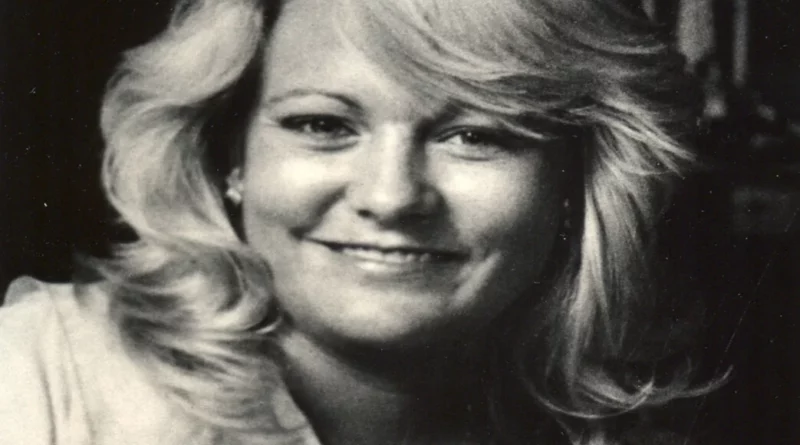Dianne Marie Abbunl College Student Disappeared and Found Killed in Tucson Arizona
Dianne Marie Abbuhl was a 24-year-old University of Arizona student whose disappearance on September 8, 1988, from her dorm room in Tucson, Arizona, and the subsequent discovery of her skeletal remains five weeks later, became one of the region’s most haunting unsolved homicides. The case—marked by baffling early clues, a mysterious man known only as “Doug,” a seemingly staged vanishing with no signs of forced entry, and decades of silence—has lived on in the minds of investigators, community members, and online cold case advocates. Renewed interest in the case in the mid-2020s has brought fresh scrutiny to old leads, yet the core questions remain: who took Dianne, why, and how did a young woman vanish from her dorm without outward struggle?
Background and Life of Dianne Marie Abbuhl
Dianne Marie Abbuhl was a student at the University of Arizona, living in on-campus housing at 1717 East Speedway Boulevard in Tucson. At 24, she was older than the typical undergraduate, and those who knew her described her as engaged in her studies and part of the campus community. She was navigating personal relationships and the normal stresses of young adulthood. The context of her life at the time included a romantic involvement with a man who, in retrospect, played a central role in the investigation; she had tried to step away from that relationship in the weeks leading up to her disappearance. Friends and acquaintances later characterized the relationship as tense, and Dianne, according to background reconstruction from statements and surviving fragments of memory shared in public forums, had been attempting to distance herself from the man known only as “Doug.”
The Disappearance: Early Morning of September 8, 1988
The disappearance of Dianne Abbuhl began with a perplexing and chilling quiet. In the early morning of September 8, 1988, Dianne was last known to be alive in her dorm room. She did not show up for routine activity or classes, and when her roommate returned, she found Dianne’s bed undisturbed—no indication she had slept there that night. More unsettling, her personal belongings—purse, wallet, keys—were all still in the room. There were no visible signs of forced entry, and nothing appeared violently disturbed. The scene suggested she had left voluntarily or been taken in a way that left no overt trace of a struggle.
Because the circumstances were opaque, the absence wasn’t immediately understood as a homicide; it was a disappearance ripe with ambiguity. The lack of forced entry, combined with the fact that she had personal effects left behind, confounded early attempts to categorize the event. There were no immediate witnesses who reported seeing anything unusual, and initial canvassing did not produce solid leads. Still, the combination of a missing adult who had not packed or taken her belongings, the absence of a crime scene in the traditional sense, and the lack of corroborating explanation raised red flags quickly for those closest to her.
Early Investigation and the Emergence of “Doug”
Investigators quickly focused on a figure who would become central to the lingering mystery: a man identified only as “Doug.” He was described by those who had seen him with Dianne as tall, driving a red truck with New York license plates, and claiming to be visiting his brother “Dave” in Tucson. He and Dianne had been involved romantically, but allegedly the relationship was cooling—she had been trying to break things off. “Doug” reportedly became obsessed as she pulled away.
Details about Doug were frustratingly scant. There was no last name publicly known, no definite trace of his background, and no confirmed means to locate him. Despite composite sketches and descriptions being circulated, and the encouragement of anyone with knowledge to come forward, Doug’s identity remained elusive. His lack of a footprint in known databases, his disappearance from the narrative after Dianne vanished, and the absence of a definitive sighting after the fact turned him into both a person of interest and a cipher—someone who had enough proximity to potential motive or opportunity to drive investigative theory, but who also managed to vanish from the investigative spotlight.
Discovery of the Remains: October 13, 1988
Approximately five weeks after Dianne’s disappearance, on October 13, 1988, skeletal remains were discovered in a remote, desolate desert area northwest of Tucson, near the intersection of North Sandario Road and West Picture Rocks Road. The location was far enough from her dorm to suggest that if she had been taken there, the perpetrator had transported her body with intent to conceal it in an isolated place. The condition of the remains—skeletal and decomposed—meant that forensic reconstruction of the exact cause of death was limited by the passage of time and environmental exposure, but identification was confirmed through dental records.
The remoteness of the recovery site underscored the likelihood that whoever disposed of her body knew the area well enough to feel confident the remains would not be easily discovered. That knowledge could have come from local familiarity or a calculated decision to use vast, open terrain to obscure evidence. Her body being placed in remote desert terrain also reflected a desire to keep her out of easy reach of discovery, a chilling indication that the killer had plans beyond a spontaneous act.
Theories, Motive, and the Camouflage of Normalcy
Without a clear scene of abduction, the initial investigation had to wrestle with competing possibilities: Was Dianne lured or coerced into leaving with someone she trusted? Did she leave of her own volition and fall victim to a chance killer? Or was the disappearance a meticulously planned abduction executed by someone who cultivated material familiarity and then coerced her into a quiet exit?
Doug’s presence in her life, combined with rumors of obsession and her desire to end the relationship, made the theory of a jealous or controlling partner compelling to investigators and true crime enthusiasts alike. The narrative that she was trying to extricate herself from a relationship while facing increasing pressure from the other party painted a picture of escalating tension that could have culminated in violence. That said, the absence of concrete evidence of confrontation, the lack of surviving eyewitness accounts, and the inability to place Doug definitively at key geographic or temporal junctures left motives in the realm of strong possibility rather than proven fact.
The fact that Dianne’s disappearance—and the initial period before her remains were found—was marked by no dramatic struggle or outward signs of violence contributed to the enduring confusion. It created a scenario where the killer likely relied on familiarity, persuasion, or deception to gain control over her movement. The absence of ransom demands, public communication from the perpetrator, or any direct post-disappearance contact (which would have suggested a different type of abductor) narrowed narrative arcs toward someone who acted quickly, privately, and possibly under a facade of trust.
Investigative Challenges and Cold Case Drift
As time passed and leads dried up, the case entered a frustrating limbo. The lack of a resolved identity for “Doug,” no forensic traceable DNA tied to a known suspect (given the era’s limitations in DNA technology and the degradation of the remains), and no credible confessions or breakthroughs relegated the disappearance and murder to the status of cold case. Investigators over the years would periodically revisit file materials, re-interview potential witnesses, and assess any new tips, but the core unanswered questions—who, what, how, and why—remained.
Public awareness of the case ebbed and flowed. For a period, Dianne’s story became a quiet footnote in the larger criminal history of Tucson, known to those who track unsolved murders or have reason to maintain memory through community advocacy. True crime forums, local interest groups, and eventually digital communities played a critical role in keeping her name alive. Collective memory, propelled by amateur sleuths and those with personal investment in cold cases, ensured that her case did not disappear entirely into bureaucratic drift.
Renewed Interest and Modern Reexamination
Decades after the original investigation, renewed attention surfaced around the disappearance and homicide of Dianne Abbuhl. In the mid-2020s, local authorities acknowledged the persistence of the case and publicized that it remained open, with the Pima County Sheriff’s Office reviewing cold-case materials. Advances in forensic technology, including DNA analysis improvements, social media mobilization of public interest, and the broader cultural spotlight on long-unsolved cases, provided a new framework for bringing eyes back to the details.
Documentary-style content, community-shared timelines, and curated online discussion amplified the narrative around Dianne’s life and death, prompting people who might have known fragments of information—or who had previously stayed silent—to reconsider old memories in a new light. Law enforcement’s public invitations for tips, coupled with the emotional resonance of a case stretching across more than three decades, created a modest revival in investigative energy.
The renewed focus also meant systemic reexamination of original leads: the enigmatic “Doug,” the possibility of overlooked witnesses or patterns, and whether any surviving physical evidence could be reprocessed with modern techniques. Investigators considered whether people close to the case had moved, passed away, or held information that only in hindsight might have been significant. The hope was that someone, somewhere, might have remembered or recontextualized a detail that was previously dismissed or forgotten.
Unresolved Questions and the Human Toll
Even with renewed scrutiny, the core mysteries of the case remain intact. Who exactly was “Doug”? Was he the perpetrator, an accessory, a red herring, or someone with peripheral involvement? How did Dianne leave her dorm in a way that left no signs of forced entry, and who had the influence or the trust to get her to go willingly or without resistance? What precise acts led to her death, and did the killer act alone or with assistance? Why was her body disposed of in such remote terrain, and did the killer return to or revisit the area?
Behind the procedural and evidentiary questions lies the human cost. Dianne’s family, friends, and the community have lived for decades with the uncertainty of her fate. The absence of closure creates a lingering wound—one filled by speculation, grief, and fragmented remembrances. The psychological weight of unresolved homicide lingers not just on paper or in cold-case files, but in the lives of those who loved her, those who shared her space, and those who see in her story a reflection of broader societal failings to protect vulnerable people and hold their assailants accountable.
The Importance of Memory and the Case’s Enduring Resonance
The disappearance and homicide of Dianne Abbuhl illustrate how a single unresolved murder can echo over decades. Without a definitive resolution, her story became both a cautionary tale and a call to continue seeking truth. Memory—in the form of public awareness, community advocacy, and the persistence of unofficial sleuths—serves as a bulwark against the erasure of victims in the bureaucracy of aging unsolved files.
Her case also reflects shifts in how society handles cold cases: from initial investigative limitations in the late 1980s, to a growing recognition of trauma, to a modern era where digital platforms can reamplify forgotten stories and technological advances can offer new avenues for evidence evaluation. The intertwining of public pressure, institutional capacity, and the moral imperative to pursue justice makes the case emblematic of both the difficulty and necessity of sustained attention to unresolved violent crimes.
Conclusion
Dianne Marie Abbuhl’s disappearance and subsequent homicide remain a ghost at the edge of Tucson’s collective memory. The facts are simple on their surface: a young woman vanishes from her dorm without overt signs of struggle; her remains are found weeks later in remote desert terrain; a mysterious figure with murky identity enters and then fades from the narrative; years pass with precious little resolution. Beneath that surface is a tangled story of personal relationships strained to breaking, possible obsession, the manipulation of trust, and a justice system grappling with the limits of evidence and time.
The renewed interest in the case more than three decades later is a testament to the persistence of those who refuse to let Dianne become just another forgotten name. Every theory revisited, every rumor checked, every digital share of her story keeps alive the possibility that someone will connect a dot, remember a conversation, or come forward with the missing piece. Until then, the questions endure, and with them the quiet hope that one day the truth—no matter how long it has been buried—will surface, bringing clarity to her disappearance and a measure of peace to those who carry her memory.
Discover more from City Towner
Subscribe to get the latest posts sent to your email.




